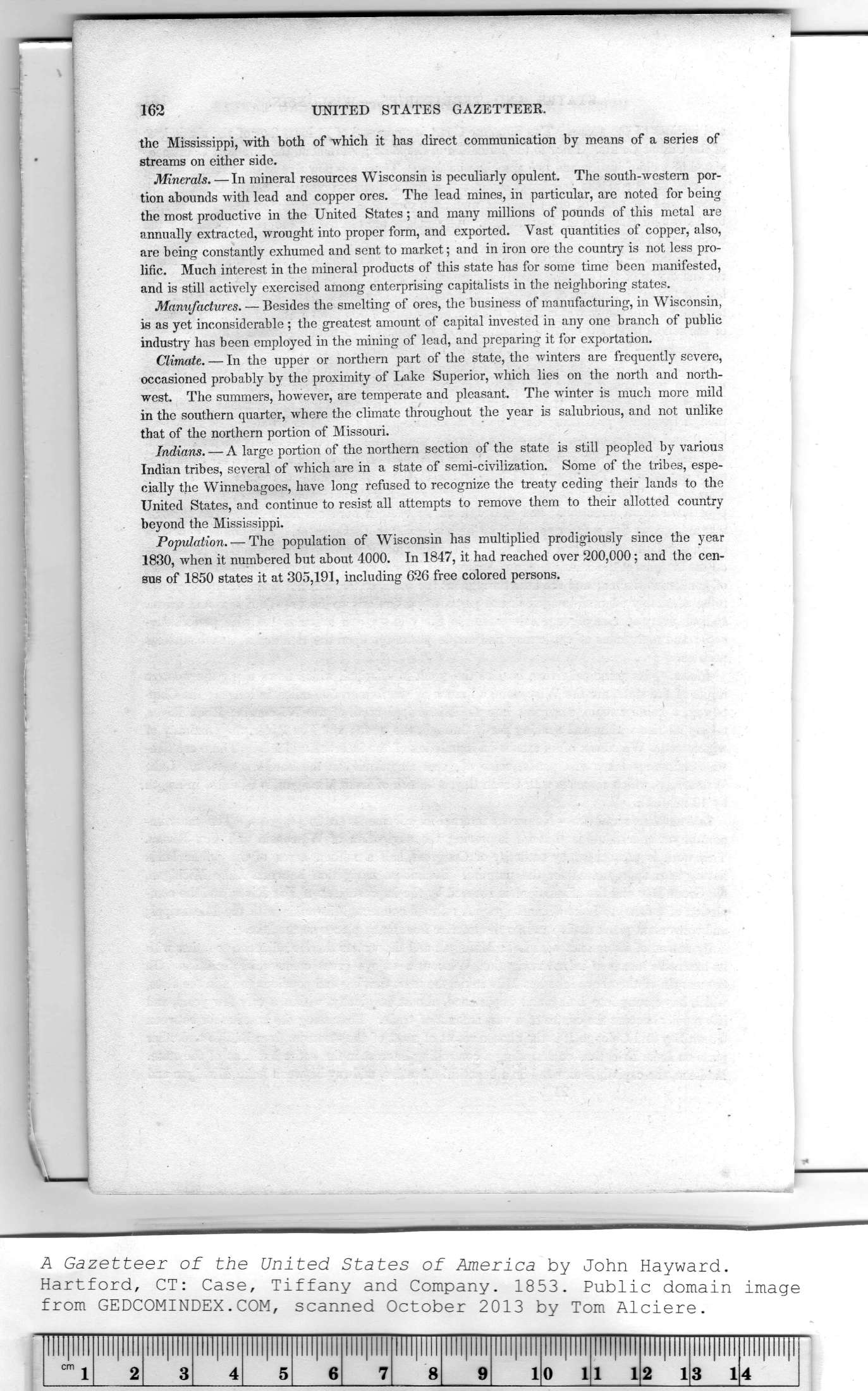|
|
Note: Ctrl and + increases the font size of the text below, Ctrl and - decreases it, and Ctrl and 0 resets it to default size.
162 UNITED STATES GAZETTEER.
the Mississippi, with both of which it has direct communication by means of a series of
streams on either side.
Minerals. — In mineral resources Wisconsin is peculiarly opulent. The south-western por-
tion abounds with lead and copper ores. The lead mines, in particular, are noted for being
the most productive in the United States; and many millions of pounds of this metal are
annually extracted, wrought into proper form, and exported. Vast quantities of copper, also,
are being constantly exhumed and sent to market; and in iron ore the country is not less pro-
lific. Much interest in the mineral products of this state has for some time been manifested,
and is still actively exercised among enterprising capitalists in the neighboring states.
Manufactures. — Besides the smelting of ores, the business of manufacturing, in Wisconsin,
is as yet inconsiderable ; the greatest amount of capital invested in any one branch of public
industry has been employed in the mining of lead, and preparing it for exportation.
Climate. — In the upper or northern part of the state, the winters are frequently severe,
occasioned probably by the proximity of Lake Superior, which lies on the north and north-
west. The summers, however, are temperate and pleasant. The winter is much more mild
in the southern quarter, where the climate throughout the year is salubrious, and not unlike
that of the northern portion of Missouri.
Indians. — A large portion of the northern section of the state is still peopled by various
Indian tribes, several of which are in a state of semi-civilization. Some of the tribes, espe-
cially the Winnebagoes, have long refused to recognize the treaty ceding their lands to the
United States, and continue to resist all attempts to remove them to their allotted country
beyond the Mississippi.
Population. — The population of Wisconsin has multiplied prodigiously since the year
1830, when it numbered but about 4000. In 1847, it had reached over 200,000; and the cen-
sus of 1850 states it at 305,191, including 626 free colored persons.
|
Illllllll |
Illllllll |
Illllllll |
Illllllll |
Illllllll |
Illllllll |
Illllllll |
Illllllll |
llll|llll |
Illllllll |
Illllllll |
Illllllll |
Illllllll |
Illllllll |
llll|llll|l |
|
Cl 11 j |
2 |
3 |
4 |
5 |
6 |
7 |
8 |
9 |
1 |
0 1 |
1 1 |
2 1 |
3 1 |
4 |
|
